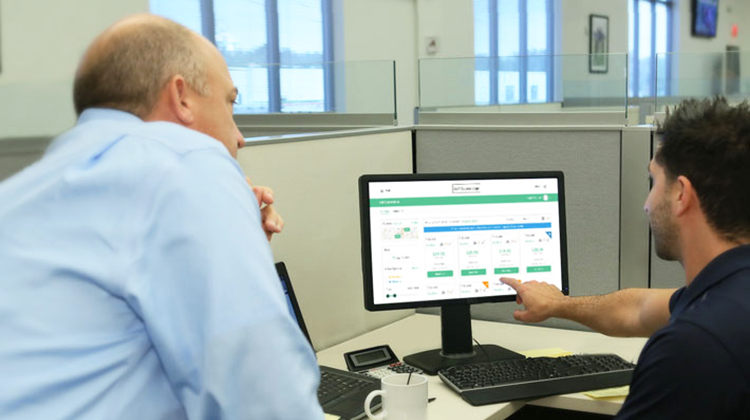Better Revenue Management and a Streamlined Operation
Credit for inventing “customer journey” as a service concept goes in part to a Swedish airline executive, Jan Carlzon, who also introduced the world’s first separate cabin for business class. The “journey” metaphor went on to become a core idea for anyone who serves the public.
Golfers booking tee times online begin their journey before they actually arrive at the facility. When the reservation can be made with ease—and price options can be factored into the decision—that customer is off to a satisfying start. As dynamic pricing is used more and more in the golf industry, golfers are viewing it as the new normal and operators are appreciating its advantages.
You can see it in practice at Stonewall Golf Club in Gainesville, Va., where Kyle Backers is the head golf professional. Tee times there—as everywhere—are perishable assets that draw fluctuating demand based on weather, day of the week, time of the day, competing leisure options and multiple other factors. Pricing dynamically downward to sell times in low demand and dynamically upward to capture top dollar for times in high demand is basic logic, as Backers sees it.
“It’s how the hotels and airlines and sports teams do it,” says Backers, “so it’s pretty much expected by anyone who is looking down at their phone and trying to schedule something they want to do.” When Stonewall began pricing dynamically, the clientele barely mentioned it, much less complained about it.
Not all dynamic pricing is created equal, according to those who work with it every day. A golf course might choose to initially use it in the off-season only, or in-season but only midweek, or in some other limited fashion. Nick Hall, a Plus Specialist within GOLF Business Solutions who works with Stonewall Golf Club, has watched the revenue management picture brighten for his partner golf course there. Hall generally sees courses move from partial use of dynamic pricing to full use. Even then, the price matrix on the computer screen can end up showing quite moderate variances in dollar amount.
You can adopt dynamic pricing and still actively manage rates. For Backers, the days when he handled the tee sheet himself were marked by considerable hesitancy. “Having Nick, our specialist, make our price adjustments turns out to be more effective,” he says. “When it was up to me, I was too concerned about making a mistake.”
A basic goal of this digital tool is to increase utilization and maximize revenue, according to Hall, but you do it based on objective data. “Dynamic pricing is not a blunt instrument,” Hall says. “The parts of the week or day that have shown high utilization are tested and often get price-adjusted upward.” He refers to this as “challenging the ceilings” on price. Not long ago at Stonewall, a tee time that was very much in-demand was booked at $11 more per round than a comparable tee time was in previous years. Backers certainly took note of it. “It was a cool thing to see,” he comments. “That foursome of golfers had a choice to buy the time or not and they wanted it.”
Studies show that giving consumers an array of understandable options speeds up their purchase decisions. To the extent the price-selection factor contributes to more people booking online, that’s absolutely a good thing. Having golfers provide their contact data when they book digitally makes database-building more efficient and it changes the atmosphere in the golf shop as the customer journey continues and players check in.
“One thing I love about dynamic pricing is the way it frees you up to connect with the golfers, getting to know them and making sure they have a great experience,” says Backers. “If I didn’t have GOLFNOW running our tee sheet and managing it in a way that brings the most golfers out here, I’d be sitting at the computer doing it myself—and not doing as good a job.” Even merchandising gets a potential lift, according to Backers. “There’s more time for customers to look around and more time to check whether they might need golf balls or a glove or a shirt,” he reports.
Consumer experiences that are “frictionless” are a holy grail of 21st-century marketing. Booking golf using digital tee sheets that are dynamically priced fits with that paradigm. And it fits with what Kyle Backers sees as a new kind of motivation for the golfer of today, versus what he witnessed earlier in his career.
“It used to be a big deal to play the most expensive course, or the hardest course, and impress your friends that you did it,” Backers says. “Now people want to get a decent deal on their green fee, make a hassle-free reservation, enjoy their round, play music in the cart, have drinks after, and just keep it fun.” When he describes a day on the links that way, it sounds like an enjoyable journey indeed.


